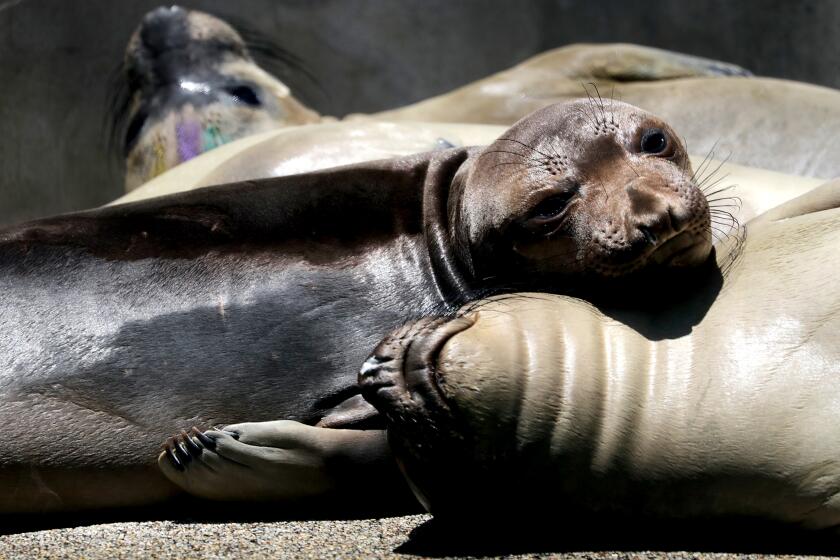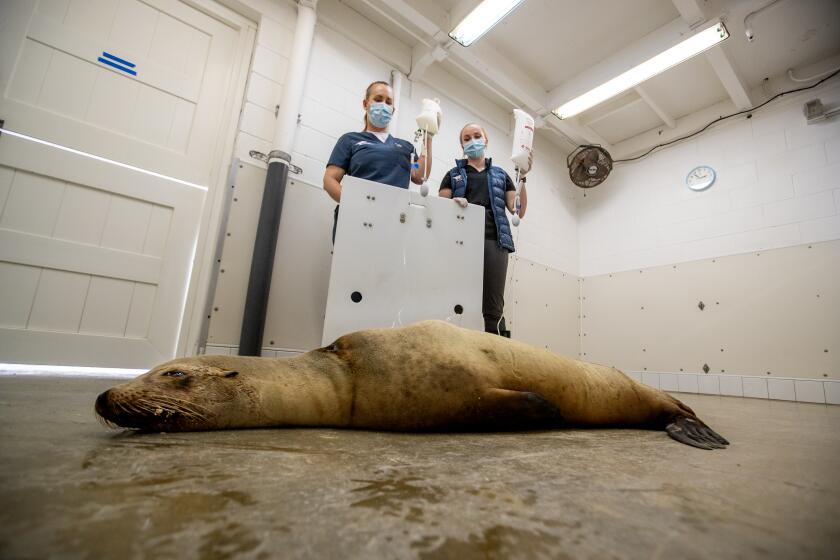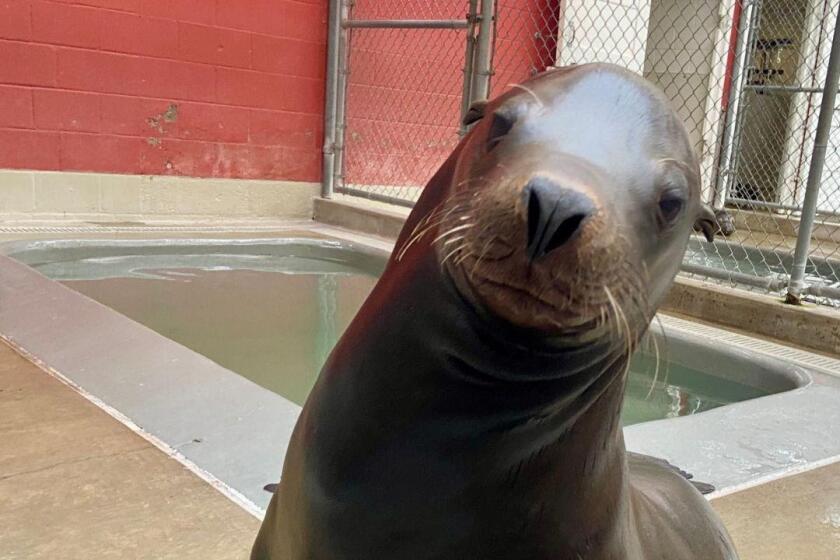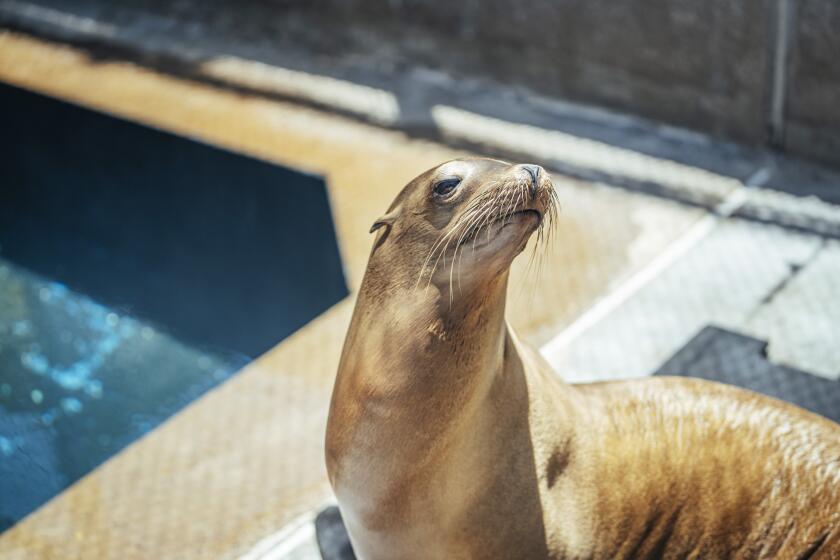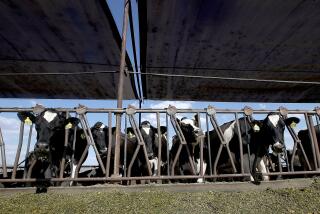As toxic algae sickens sea lions, other marine animals, California wildlife center needs help
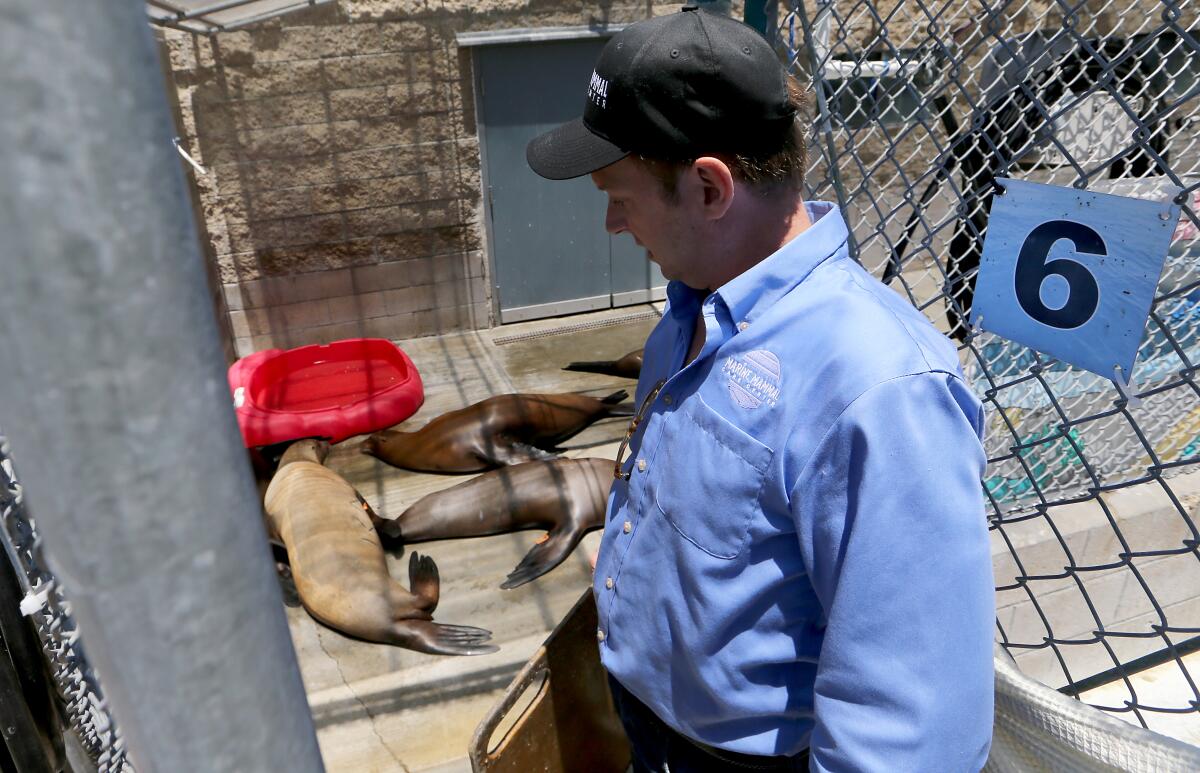
A wave of sick and injured sea creatures is pushing the Marine Mammal Care Center to the limit, jeopardizing the San Pedro-based veterinary assistance and food shelter’s ability to provide necessary care.
Without more financial help and volunteers, animals “might not be able to be rescued,” center Chief Executive John Warner said during a news conference Thursday in Marina del Rey.
“We need as many resources as possible to continue to care for animals, for marine mammals that have been dealing with this algae bloom,” he said.
The bloom of toxic algae has overtaken Southern California waters and killed or sickened more than 1,000 marine mammals last month, according to the National Oceanic and Atmospheric Administration.
More than 1,000 marine mammals along the Southern California coast have gotten sick or died because of the bloom of toxic algae, according to the National Oceanic and Atmospheric Administration.
High concentrations of domoic acid — a neurotoxin produced by the marine algae Pseudo-nitzschia — have been found in Southern and Central California waters, according to forecasts by the NOAA and the Southern California Coastal Ocean Observing System.
Sea lions, dolphins and even sea birds have become ill after they eat small fish that consume the algae.
Warner said his organization is thankful for donations received amid “the largest algae bloom on record.” But even though it’s only July, they are over budget by $500,000.
At this time last year, the center was attending to 20 marine mammals. There were 113 such critters being cared for by late June.
Warner said sick and injured marine mammals cared for by the center consumed 50 tons of fish last year. He ordered an additional 25 tons of food this year, anticipating a larger need due to the chance of stormy El Niño weather, but those provisions were gone as of mid-June.
Sea lions experiencing seizures or sickness due to an ongoing bloom of toxic algae have bitten or behaved aggressively toward beachgoers across Southern California, according to experts.
That forced him to place two unanticipated orders of 25 tons each.
Warner — flanked by Los Angeles City Councilmember Traci Park, county Department of Beaches and Harbors Director Gary Jones, and staffers from the office of county Supervisor Holly Mitchell — demonstrated a temporary 50-by-50-foot overflow shelter along the Marina del Rey beach during Thursday’s news conference.
That staging area provides an outlet for a “maxed out” Marine Mammal Care Center, which was dealing with 70 sea lions suffering from domoic acid toxicity as of June.
Eight sea lions were recuperating in the additional space Thursday, but it has helped about 35 marine mammals total since it opened June 23, Warner said.
After Warner called for more help on June 21, Jones said Mitchell “greenlighted” the emergency effort and established the sea lion safe zone within 48 hours. Mitchell’s office also provided security during the Fourth of July to make sure beachgoers would not interfere with the recovering animals.
“We’re kind of losing count right now because they’re coming in nonstop,” Dr. Alissa Deming of the Pacific Marine Mammal Center said. “We rescued four animals this morning already, and we’re kind of getting inundated with calls.”
Park’s office also reached out to volunteers through social media and newsletters. Most volunteers were locals, including about seven members of Park’s office, said staffer Gabby Medina.
Volunteers serve as guardians and advise residents to keep their distance from the sea lions, avoid taunting them and keep their dogs on a leash.
“I’m particularly thankful to the local residents who have taken 6 a.m. to 8 a.m. shifts and 6 p.m. to 8 p.m. shifts to make sure our sea lions are not disturbed,” Warner said.
Warner said the Marine Mammal Care Center staffs 17 people and would have been crippled without the aid of volunteers. During this algae crisis, he said he’s easily received help from “at least 150 volunteers.”
Local experts are asking beachgoers to keep a safe distance and report strandings, amid a bloom of toxic algae that produces a neurotoxin that damages some marine mammals’ brains.
Within a two-week span in June, Warner said his office’s rescue hotline received more than 1,000 calls — including reports of animals “seizing and foaming at the mouth,” which he said were symptoms of domoic acid poisoning.
Despite these problems, sea lion survival rates were still at 60% to 90%, granted “the animals were found in the early stages,” he said.
Warner said 120 sea lions have been treated and rescued at the center since the first full week in June. He’s unable to place many of them back into the ocean, however, because of the persistent algae.
Blooms normally “dissipate four to six weeks after they start,” Warner said, but it’s unclear when this latest will.
Until that happens, Warner said, he’ll be looking for more help.
Times staff writer Summer Lin contributed to this report.
More to Read
Sign up for Essential California
The most important California stories and recommendations in your inbox every morning.
You may occasionally receive promotional content from the Los Angeles Times.
